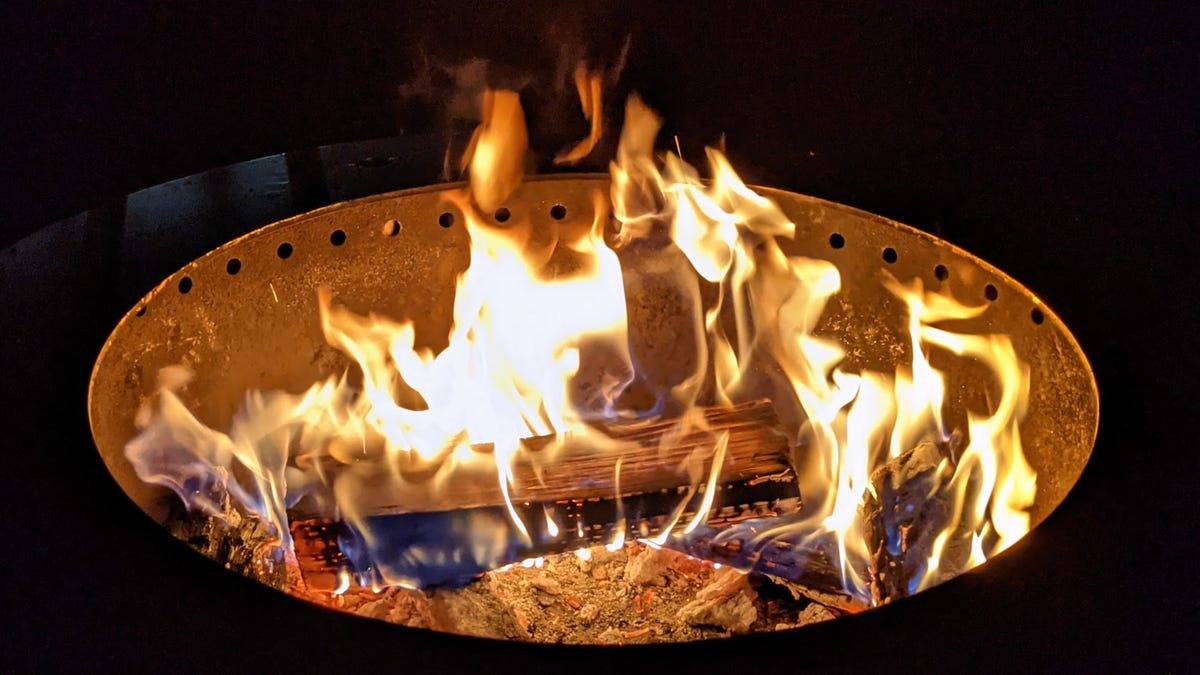 Why You Can Trust CNET
Why You Can Trust CNET Stop smelling like a campfire every time you use your fire pit. Here's how
Cut down the chances of making tons of smoke when you light up your fire pit.
Even the fanciest smokeless fire pit isn't entirely smoke-free. Under certain conditions these wood-burning contraptions can emit just as much smoke as their old-fashioned counterparts. Likewise, even low-tech fire pits can be less smoky when used skillfully.
This guide lists simple tips for operating your fire pit better, so it generates as little smoke as possible. Other side benefits include better fires that roar along with minimum effort, and the fact that you're less likely to smoke out your neighbors.
When your pit is completely cool, scoop out the ashes and other debris.
Clean it first
Lots of ash, dirt and solid debris in your pit is a problem. This grime impedes airflow. That's especially true with modern smokeless fire pit models. They rely on sophisticated venting systems to pull air in from ground level.
The air supplies oxygen for wood burning within the pit. Once the fire is hot enough, rising smoke is pulled back down to the ground courtesy of additional vents at the top of the pit. This flow creates a secondary burn that's both hotter and emits far less smoke than ordinary campfires.
That's why it's imperative to keep your fire pit clean and in good working order.
Use dry hardwood
Fuel that contains little moisture is key to enjoying a satisfying bonfire. Whether you plan to light up a traditional fire pit, a fancy smokeless pit or a basic campfire, having dry wood is critical. When you bang two pieces of dry wood together you should hear a high pitch, almost ringing sound. Many home improvement stores sell kiln-dried wood especially for the purpose.
Wet wood, on the other hand, is heavier. And when slammed together wet pieces make a thudding thunk or low-pitch sound. You should also seek out hardwood varieties such as hickory, oak or ash. Avoid soft woods like pine and cedar. They contain high amounts of smoke-producing resin and sap.
Make a log cabin structure inside your fire pit. Smaller pieces on top and larger pieces on bottom with kindling at the center.
Set up your fire right
It's tempting to throw multiple massive logs down into your fire pit to start. Choose smaller logs instead. Use the log cabin method pictured above. This technique provides plenty of room for airflow because it leaves gaps between the wood.
Make sure to add small, thin strips of wood to the center of your log cabin structure. This kindling should light quickly then spread the fire outwards to the larger pieces of wood. You can also use a fire starter to help get things going. Dryer lint also works here.
Make sure your fire fully ignites by using dryer lint and more kindling than you think you need.
Light it with authority
Many times it takes more energy to ignite a fire than you expect. Avoid that by lighting multiple firestarters, or at least more than you think are necessary, in the beginning. Often this will reduce the chances of your fire sputtering out before it really starts.
With skill, practice and the right fuel, you'll have a nice low-smoke fire in your fire pit in no time.
Don't overfeed it
I confess this is a mistake I often make. With the fire in the pit rolling along nicely, I overdo it by adding too much wood. Placing too much wood in a fire will significantly lower temperatures within the pit. That leads to lots more smoke. It can even cause a fire to die out.
When you add more fuel, do it one piece at a time. Resisting the urge to overfeed your fire helps sustain flames in the long run.
You can convert Breeo smokeless fire pits into serious outdoor cooking machines.
Some smokeless fire pit recommendations
If you're ready to step up to an advanced smokeless fire pit, here are a few of our favorites. The Solo Stove Yukon has a big 23-inch mouth. It also boasts an impressive airflow system that produced the least smoke of all the fire pits we've tested.
For durability and features, definitely go with the Breeo X Series 24. This fire pit has a large 29.5-inch diameter, plus a smokeless airflow system. It also has a sear plate around it for grilling food. And constructed from COR-TEN steel, the X series is built to last.
Need a portable fire pit to carry to the beach or your next camping trip? Take a look at the BioLite FirePit. Compact, the FirePit uses a motorized fan to supply adjustable airflow. You can also grill over it, and you can control it with your phone over Bluetooth.
Read more: Best fire pit to buy in 2021


